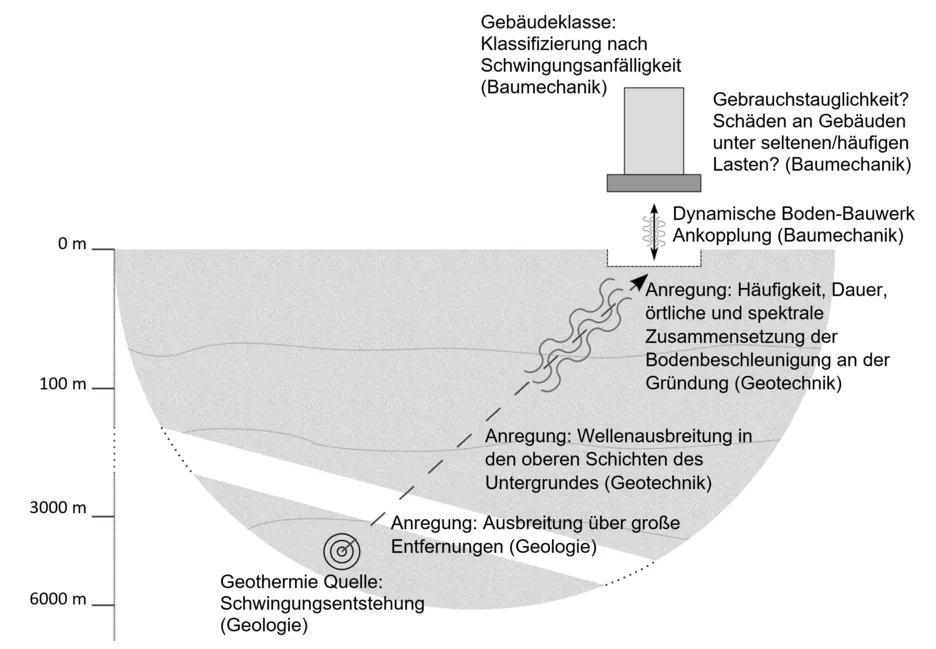Geothermal-Alliance Bavaria
Sub-project "Social: Climate protection through a safe technology"

Due to the rising environmental concerns towards using nonrenewable resources for heat and power production, renewable sources, such as geothermal energy, are steadily gaining popularity. In Germany, the aim is to meet 80 % of the electricity demand and 60 % of the gross final energy consumption via renewable resources by the year 2050 (BMWi 2014). The deep geothermal energy plants accounted for about 0.1% of the country’s heating in 2020. A recent study by the Leibniz Institute for Applied Geophysics (LIAG) reported that deep-geothermal energy may potentially provide approximately 17% of the expected heating demand by 2050 (Weber et al. 2019).
The high-pressure injection of fluids into Earth's crust at the geothermal powerplants may induce low-magnitude earthquakes. The building vibrations caused by these micro-seismic events are the primary reason for the decline in the public acceptance of geothermal explorations. In most cases, these vibrations are considered a general nuisance similar to the vibrations resulting from railway track operations. Additionally, the induced seismicity due to geothermal operations is substantially low compared to petro-thermal activities, mining, or surface loads caused by hydraulic reservoirs (Grünthal, 2014). Nevertheless, a thorough understanding of the effects of induced seismicity on building serviceability will help improve public perception and design possible measures for risk-reduction. This project attempts to devise a methodology for assessing the effects of induced seismicity due to geothermal power plants on built structures. The outline of the project is briefly presented below:
-
Development of building taxonomy:
In the first part of the project, various typology classes will be defined to categorize the buildings in Munich such that a particular group of buildings show similar behavior under the ground-borne vibrations. Such categorization is mainly defined on the basis of both structural system (building material, primary load-bearing structure, level of code design) and geometrical configuration (building height). -
Soil-structure interaction modelling:
Using the identified building typologies classes, exemplary building models will be generated. These building models will then be coupled with exemplary impedance models for the subsurface, with soil parameters varied to investigate the influence of soil-structure interactions. The response of these models, i.e., the horizontal and vertical slab vibrations, is evaluated under the excitation applied at the soil-structure interface. -
Probabilistic assessment:
A site- and building-specific probabilistic risk analysis will be performed to estimate the exceedance probability of a limit state for the defined building classes based on the previously defined stochastic input variables and model parameters.
The proposed modeling approach will be verified using full-scale finite element models and the building vibration data available from the field studies conducted in and around the Munich area.
References:
- BMWi: Innovation Through Research – Renewable Energies and Energy Efficiency: Projects and Results of Research Funding in 2014, Federal Ministry for Economic Affairs and Energy, Berlin, (2014).
- Grünthal, G. (2014). Induced seismicity related to geothermal projects versus natural tectonic earthquakes and other types of induced seismic events in Central Europe. Geothermics, 52, 22-35.
- Weber, J., Born, H., & Moeck, I. (2019, June). Geothermal Energy Use, Country Update for Germany 2016-2018. In Proceedings of the European Geothermal Congress.